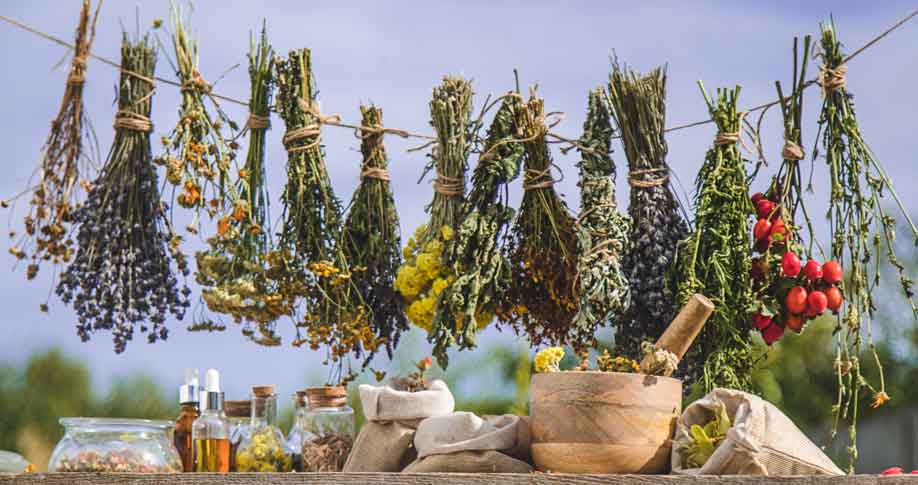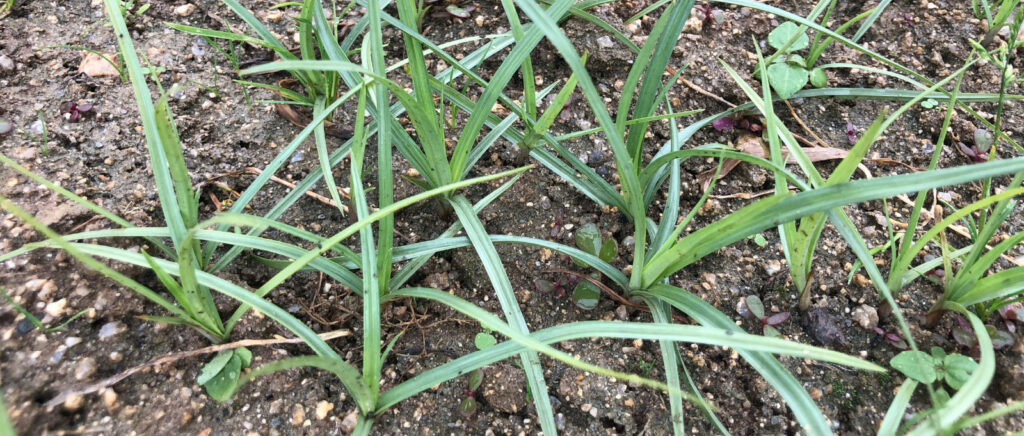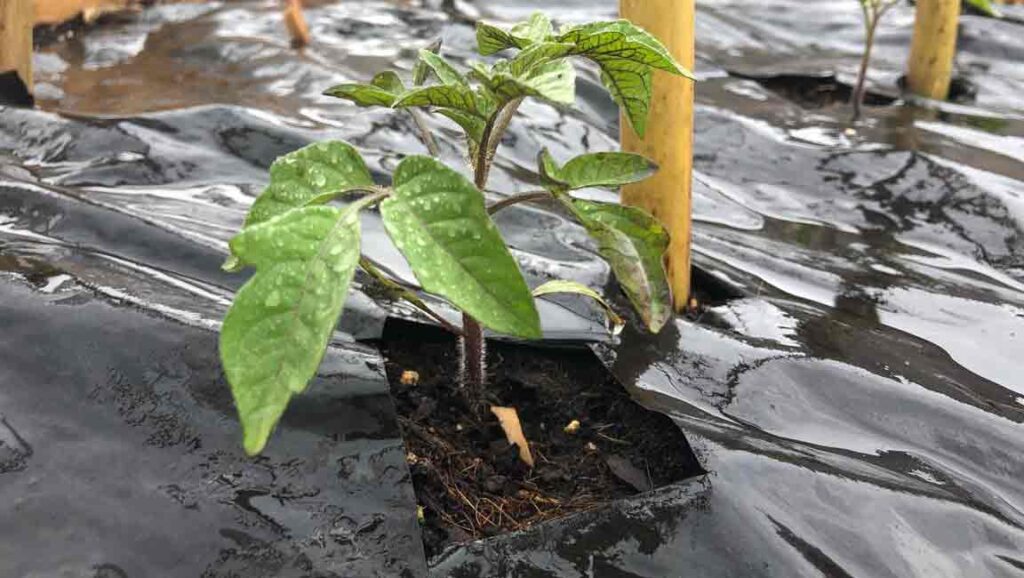Welcome once again to our agricultural section. This time, we’ll take an in-depth look at how to plant herbs and the benefits of this comforting and pleasurable activity. Whether it’s a plan for our family garden, a community garden, or even for large tracts of land for commercial purposes.
We’ll analyze how to improve the production of these wonderful plants, the various ways to take advantage of their characteristics in areas such as gastronomy, natural cosmetics, phytotherapy, and the food industry. And, if we’ve already outlined this in our project map, here we’ll learn how we can benefit by diversifying our sales routes: fresh and dried aromatic plants, essential oils, extracts, and many other presentations, all with successful profitability throughout the year.
Historical background of aromatic plants.
Let’s study a little about the historical background of aromatic plants, so we can reconnect with our ancestral traditions:
- Since ancient times, the cultivation of aromatic plants has spread across diverse cultures and civilizations. In the ancient world, they played a vital role in food, medicine, religious rituals, and trade between regions and races.
- In ancient times, the earliest documented civilizations, such as Mesopotamia, Egypt, China, and India, attest to the very special and ritualistic use of aromatic herbs in sacred ceremonies and various embalming techniques. An Egyptian medical text dating to around 1550 BC, known as the Ebers Papyrus, contains recipes using thyme, anise, and coriander, among many other aromatic spices.
- In Egypt, they were highly valued and cultivated for their healing properties, used in cosmetic preparations such as perfumes and essential oils, and in religious offerings. For example, lavender was frequently used to scent temples and the robes of the pharaohs.
- The therapeutic properties of aromatic plants were widely documented in Greece and Rome. Hippocrates and Dioscorides, two key figures in ancient medicine, particularly explored and developed the use of these plants for healing. Dioscorides left his mark on us in his Treatise on Materia Medica, which remained an undisputed reference for phytotherapy for over a thousand years. The commercial and military networks of the Roman Empire succeeded in expanding the cultivation of aromatic plants throughout Europe, especially parsley, basil, and cumin, which were planted in their domestic gardens and rural villas.
- During the Middle Ages, monasteries fostered herb gardens for medicinal and culinary uses. Plants such as mint, sage, rosemary, and fennel were widely used in monastic herbal medicine.
- These medieval gardens also functioned as experimental areas where the acclimatization qualities of plants were studied during their development through climatic variations. Therefore, it is considered that the first traditional agricultural techniques that are the basis of today’s organic farming activities appeared during this period.
- During the Modern Age, the territories of the New World were explored due to the rise and expansion of maritime routes, and it was here that the formal exchange of aromatic spices between continents took place: vanilla and chili pepper were introduced to Europe, while oregano and lavender traveled to the Americas. Thus, from this period onward, the industrialization of aromatic plant cultivation was consolidated at the global level of the era, even though ancestral practices were preserved in rural areas.
- The 20th century marked a decline in the importance of aromatic plant cultivation due to mass, industrialized agriculture of high-yield crops.
- Now, moving forward in time, we can see that today we are experiencing a return to health and natural cuisine with sustainable crops, respectful of our ecosystem, and self-cultivation.
- Planting herbs is now an indispensable practice in regenerative agriculture. We believe it is essential to respect our biodiversity and avoid the use of chemicals and plastics that continue to pollute. This is where biodegradable paper mulch serves as an ecological aid and protector for all our crops. This mulch is a hybrid of traditional and natural knowledge and advanced technology, as we will see later.
Here we show an interesting link:
https://ifaroma.org/es_ES/home/explore_aromatherapy/history-aromatherapy
Planting herbs. A strategic decision that offers us multiple opportunities.
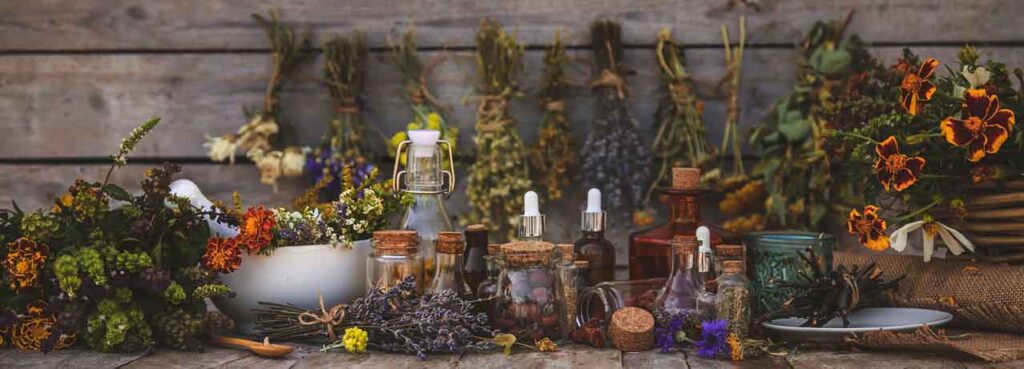
- When we decide to plant aromatic plants as part of our crop map, we are opening ourselves up to a variety of paths, all highly profitable and enriching, as we will bring significant economic, therapeutic, environmental, and agricultural benefits to our surroundings.
- This type of crop requires low inputs, provides sufficient soil coverage, helping to reduce erosion by promoting microbiota and a healthy agroecosystem, and easily adapts to water-restricted and semi-arid terrain.
- In addition, they attract pollinating insects and have minimal potential for contracting diseases and pests, as they are natural repellents that can be combined with our main crops as a protective measure.
- Furthermore, many of these species are perennial, which means we can harvest crops year-round, giving us greater profitability.
Planting aromatic plants as a natural tool to combat pests and fungi.
These wonderful plants act as a protective agent for our crops. Many of these herbs have antifungal and repellent properties.
Planting aromatic herbs as natural fungicides:
Several species contain essential oils with antimicrobial properties, capable of inhibiting or controlling the proliferation of pathogenic fungi in the soil and on neighboring plants. These properties are especially useful in organic farming, where the use of synthetic fungicides is restricted or prohibited.
Let’s study some of these species:
Thyme (Thymus vulgaris): This is a Mediterranean aromatic plant with high fungicidal properties and good compatibility with cabbage, strawberries, lettuce, and spinach. It is not recommended to plant thyme in very wet soils as it requires well-drained soil without excess moisture. Its bioactive compounds, such as thymol and carvacrol, give it effective antimicrobial properties to combat the development of downy mildew and botrytis (grey mold). Thyme can be combined with strawberries, bananas, and Brussels sprouts.
We share this information that is very useful to us:
El Tomillo, un fungicida y bactericida al alcance de todos
Oregano (Origanum vulgare): This is a very powerful antifungal and is suitable for planting in damp areas or areas prone to powdery mildew, a grayish powder that appears on the surface of leaves, young stems, and flowers. It is also suitable for planting pumpkins and aloe vera.
Garlic (Allium sativum): Our garlic isn’t considered an aromatic plant, but planting it among other crops can prevent the growth of pathogenic fungi such as fusarium. It pairs well with basil, eggplant, and lettuce.
Sage (Salvia officinalis): This aromatic and medicinal plant is a powerful natural fungicide, antimicrobial, and insecticide. It helps prevent and control the appearance of common fungal diseases in crops. Its distinctive aroma helps repel insects and pests such as whiteflies and aphids.
Sage can be interplanted with broccoli, Brussels sprouts, cauliflower, thyme, rosemary, and lavender.
Planting fungicidal herbs like these also benefits us greatly, as we can prepare them as homemade infusions that we can use to spray our crops and prevent and control the onset of these diseases.
Plant aromatic plants as natural insect and pest repellents.
By intercropping these species in our crops, we build natural protective barriers against unwanted invasion by insects and pests. Let’s analyze:
Basil (Ocimum basilicum): Native to Asia, this delicious species has an intense aroma and is rich in essential oils such as eugenol, which works as an excellent repellent for insects, mosquitoes, aphids and whiteflies, and is compatible to associate with tomatoes, peppers, garlic, eggplants, lettuce, parsley and chives.
Mint (Mentha spp.): This perennial species has antifungal and repellent properties. It is very easy to cultivate and grows quickly. It inhibits the growth and spread of pathogenic fungi such as Fusarium, Rhizoctonia, and Alternaria, and repels invading insects such as aphids, ants, mosquitoes, and moths.
We can also implement it as a natural extract or slurry to spray other plants.
It is recommended to plant it at the edges of the garden or in pots due to its invasive nature, which can compete with other species such as oregano and basil, although it is compatible with tomatoes, carrots, strawberries, and cabbage, as long as we can control its growth and expansion among our main crops.
Rosemary (Rosmarinus officinalis): Native to the Mediterranean, this hardy perennial species also acts as a fungicide and repellent. It adapts well to dry and warm climates and is ideal for use as a natural protective barrier between organic gardens.
Its essential oils (cineole, alpha-pinene, and carnosol) provide these essential qualities, effectively inhibiting fungal and microbial invasions and repelling the appearance of carrot flies, mites, and moths. We can also prepare it as an infusion or natural extract to spray our crops.
Lavender (Lavandula angustifolia): This beautiful aromatic perennial with attractive and dazzling flowers beautifies our crops both in appearance and aroma, and works very well as a natural barrier against pests and diseases, while also promoting biodiversity and the balance of our ecosystem.
Its various essential oils act in all areas to repel and inhibit the appearance and proliferation of these unwanted agents. Oils such as linalool and linalyl acetate are potent antifungals against fungi such as Botrytis, Fusarium, and Oidium. Cineole and borneol are antiseptics that strengthen the resistance of nearby plants. And tannins and flavonoids are antioxidants that protect plant tissues.
Lavender is beneficial for crops such as thyme, bay leaves, rosemary, sage, carrots, tomatoes, beets, cabbage, and strawberries.
Rue (Ruta graveolens): Also native to the Mediterranean, this intensely fragrant perennial herb strengthens our crops’ natural defenses against unwanted invasions. Rue has the unique ability to combine essential oils, alkaloids, and flavonoids, which actively act as protectors, bactericides, and antioxidants for our agricultural projects. It’s recommended to intercrop it with ornamental and fruit plants, root vegetables such as carrots and beets, and to plant it in pots to prevent possible antagonism with basil, parsley, mint, lettuce, and spinach.
What species of aromatic plants can we choose according to our environment?
When we design the planting of aromatic plants for our agricultural roadmap, whether domestic, community, or for small, medium, or large-scale production, we have a great advantage: these species have a good capacity for adaptation and resilience. Let’s take a closer look at the type of environment we’ve designed for our project.
Terraces, planters, balconies and windows:
- In these spaces, it is advisable to plant aromatic plants in clean pots at least 20 cm deep to allow the plants’ root systems to develop properly.
- Remember to always plant in areas free of debris from previous crops to avoid potential contamination from pests, diseases, or weeds that remain, or that have stuck to the walls and bottom of our pots.
- Containers should have adequate drainage, direct light as much as possible, and controlled irrigation into the soil, combined with light, loose substrates to allow proper aeration.
- A very effective solution for planting herbs is to use biodegradable paper mulch, as it helps us control the proper amount of moisture and inhibits the spread of pests and diseases, as well as the growth and proliferation of weeds.
- We’ll spread it over the surface of each pot, and it will immediately begin its protective action. Remember, the paper mulch will biodegrade within a few months and become a wonderful nutrient for our next crops.
- In our pots, we can plant aromatic plants such as basil, parsley, chives, mint, oregano, and cilantro, as these containers will be very suitable and beneficial for the growth and development of these species, which will offer us a whole range of pleasant aromas.
Raised beds:
Let’s learn more about this traditional method for planting aromatic plants.
Raised beds are raised, demarcated areas of land designated for specific crops, especially in organic, agroecological, and productive gardens. These spaces are highly recommended because they allow for more effective control of the entire planting process. If we implement biodegradable paper mulch, we benefit even more because this material saves us unnecessary or unforeseen expenses when we are forced to make unexpected investments during the growth and development of our crops.
What advantages do we get from planting aromatic plants in raised beds?
This technique brings us many benefits that we should consider:
- They allow for better drainage of the soil and substrates, as they are raised several centimeters above any type of soil, allowing us to work comfortably standing up without excessive physical effort.
- Better aeration for the root system means the roots will have a greater opportunity to develop healthily, and this is because the beds are the right depth for this to happen.
- We won’t be affected by soil compaction because there won’t be a need to tread on it, as often occurs with direct-to-ground planting.
- It allows us to rotate and associate crops more easily and safely, as is the case with aromatic herbs, which can be interspersed with main vegetable crops in beneficial combinations due to their fungicidal, antimicrobial, and repellent properties.
- Species such as rosemary, lavender, sage, thyme, oregano, basil, and cilantro are especially recommended for these combinations and provide us with both diverse and stimulating aromas and a whole range that we can use in many ways, and even share with our nearby communities to promote self-cultivation, and sell them at our local markets.
- To achieve even better results, we can spread our biodegradable paper mulch over each bed. Thanks to the characteristics of this unsurpassed material, we’ll obtain top-quality crops, as it will fully integrate into each planting to protect it from unexpected temperature changes, as well as from pest infestation and the potential for diseases common to our aromatic plants. It also maintains balanced humidity levels, which will benefit our water costs.
Planting aromatic plants in open fields:
- If we have larger areas, such as home gardens, community gardens, or large commercial plots, we can plant herbs that adapt and thrive very well, such as rosemary, lavender, oregano, fennel, and sage. In these cases, we will need to plan the soil’s characteristics in more detail to organize the appropriate nutrients, even though many herbs are quite hardy and adaptable.
- Here, the use of biodegradable paper mulch is essential to prevent and resolve any unforeseen issues: soil prone to compaction or cracking, arid areas or areas with limited access to sufficient irrigation, harsh climates or those with abrupt changes in temperature and wind.
- It is also advisable to study the appropriate associations of aromatic plants and main crops to avoid competition between species.
- Here we can plant aromatic plants such as rosemary, which is highly adaptable to dry, stony soils, temperature changes, and infertile areas.
- Oregano tolerates dry soils lacking sufficient organic matter and abrupt temperature changes. It does not require frequent watering.
- Sage thrives in arid, fairly sunny soils, tolerating mild frosts and dry summers. However, if you mulch this area with biodegradable paper, your sage will greatly appreciate it, and the harvest will be high-quality.
- Lavender tolerates prolonged drought with little irrigation, in climates with high sun exposure and in infertile, calcareous or sandy soils.
- Fennel tolerates intense heat and arid climates as it prefers full sun exposure and thrives in loose soils.
The cultivation of this group of aromatic plants in difficult climatic conditions and soils lacking sufficient nutrients can be considerably improved by using biodegradable paper mulch. Maintaining the correct humidity reduces water evaporation in these arid areas, controls the temperature balance of the soil if the crop is subjected to sudden changes, acts as a protective dome for the root system to allow optimal development of each seedling and reduces the impact of direct radiation on them, and inhibits the appearance and proliferation of weeds and compaction or cracking of the soil.
It’s very important at this point to study and take precautions before embarking on our cultivation plan. This means analyzing the soil’s nature, climate, temperature, and ability to sustain adequate and regular irrigation. Planting herbs in temperate seasons, such as spring or fall, gives them a better chance to take root and begin healthy development.
Find information on local and wild species that have a longer useful lifespan and are usable.
What species of aromatic plants can we choose according to our climate?
Let’s study the unique needs of each aromatic plant. Even though many of these species are resistant to harsh climates and almost extreme temperature conditions, it’s important to keep in mind that our plants require our care and protection so we can obtain optimal and successful benefits.
- A first step in our roadmap will be to select those varieties that adapt favorably to the climatic conditions in which we plan to plant. However, remember that each species has its preferences, but we can slightly modify these habitats by using biodegradable paper mulch, which serves as a protective and regulating agent throughout the entire growth cycle of our crops.
- The climate, whether cold, temperate, or warm, the nature of the soil, and the possibilities of obtaining regular and adequate irrigation are also factors we will consider on our roadmap. At this point, it is essential to consider our initial costs, investment in maintenance during the development of the crop, water, and treatment for pests and diseases if they eventually occur.
Planting aromatic plants for cold climates.
- It is necessary to choose perennial species that can produce buds at the end of each winter period, or that adapt comfortably to prolonged cold temperatures and intense frosts.
- Biodegradable paper mulch works in these cases to protect the root system and minimize the risk of water stress by maintaining a constant level of humidity and balancing the temperature for healthy plant development.
- If these intense frosts occur, we must take precautions in advance. It is advisable to place tunnels over the crop, preferably on raised seedlings, and spread paper mulch from the beginning of the crop. This will allow robust seedlings to develop and then be transplanted to the final soil with less risk of failure.
Recommended species for cold climates:
Thyme (Thymus vulgaris):
This species is an excellent choice for cold, dry temperatures, easily tolerating temperatures down to -7°C.
Sunlight: Full sun.
Watering: Very sparse in winter.
Soil: Sandy, with very good drainage.
Recommendation: Use paper mulch to prevent excess moisture. Ideal for raised beds.
Oregano (Origanum vulgare):
This is a hardy species and produces new shoots without problems.
Minimum temperature tolerance: down to -5°C.
Sunlight: Prefers full sun, but tolerates some semi-shade.
Watering: Low. Only when the substrate is dry.
Soil: Light, poor, but with good drainage and no risk of waterlogging.
Recommendation: Prune before winter to strengthen the root system.
Mint (Mentha spp.):
A hardy perennial, it is best planted in partial shade, but it adapts very well to cold and humid climates.
Minimum temperature tolerance: down to -10°C.
Sunlight: Partial shade or filtered sun.
Watering: Regular but avoid waterlogging. It is recommended to use biodegradable paper mulch to prevent this.
Soil: Moist, fertile, and well-aerated.
Recommendation: Note that the plant will lose its aerial part in winter, but will produce new shoots towards spring.
Chives (Allium schoenoprasum):
A hardy species, very resistant to light frosts and suitable for continental climates.
Minimum temperature tolerance: down to -10°C.
Sunlight: Full sun or partial shade.
Watering: Moderate and regular.
Soil: Cool, with good organic matter.
Recommendation: It will go dormant in winter and produce new shoots towards spring.
Sage (Salvia officinalis):
This herb requires good drainage to effectively tolerate low temperatures.
Minimum temperature tolerance: down to -4°C.
Sunlight: Direct exposure.
Watering: Moderate and spaced to allow water to drain properly, and let the soil dry between waterings.
Soil: Loose and well-drained. It is affected by waterlogging, so we must take measures to protect it from excess moisture.
Recommendation: Implement the use of biodegradable paper mulch, which will provide control and prevention and protect the crop in areas with frequent frosts.
Parsley (Petroselinum crispum):
Minimum temperature tolerance: down to -6°C.
Sunlight: Partial shade or partial sun.
Watering: Regular, without flooding.
Soil: Fertile, cool, and well-aerated.
Recommendation: Sow in late winter or fall for continuous harvests. It withstands cool climates better than extreme heat, and is productive when grown in pots, raised beds, and home gardens.
Dill (Anethum graveolens):
Minimum temperature tolerance: down to -4°C.
Sunlight: Full sun, although it tolerates mild cold.
Watering: Moderate, especially at the beginning of planting.
Soil: Well-drained and with good organic soil.
Recommendation: Early sowing in spring or late summer gives the best results in cool climates.
It is very suitable for quick rotations in the garden.
Cilantro (Coriandrum sativum):
Minimum temperature tolerance: down to -3°C.
Sunlight: Direct sun in winter, partial shade in spring and summer.
Watering: Light and frequent watering.
Soil: Well-drained, loose, and rich in humus.
Extra tip: In cold climates, it doesn’t flower prematurely, allowing for more leaves to be harvested.
In cool areas, it’s perfect for growing in fall and spring.
Lemon balm (Melissa officinalis):
Minimum temperature tolerance: down to -8°C
Sunlight: Filtered sun or partial shade
Watering: Constant in spring and summer, and moderate in winter.
Soil: Moist, fertile, and partially shaded.
Recommendation: It loses its aerial parts in winter but produces vigorous new shoots in spring. Very suitable for planting at the edges of flowerbeds and gardens.
Fennel (Foeniculum vulgare):
Minimum tolerated temperature: down to -5°C.
Sunlight: Direct sun.
Watering: Moderate, keeping the soil cool.
Soil: Deep, loose, and nutrient-rich.
Recommendation: If planted in autumn, we can harvest leaves in winter and bulbs in spring. It can be grown alongside long-cycle crops in temperate and cold climates.
Aromatics for temperate climates.
The temperate Mediterranean temperatures are favorable for planting all varieties of herbs. For much of the year, we can grow perennial and annual plants, taking advantage of the mild winters and abundant sunlight, and staggering planting in spring and autumn to ensure continuous harvests.
Recommended aromatics for temperate climates:
Rosemary (Rosmarinus officinalis): hardy, productive and perennial.
Lavender (Lavandula angustifolia): requires full sun and good drainage.
Basil (Ocimum basilicum): an annual species, very aromatic and sensitive to cold, but prone to being invaded by aphids and whiteflies, which is why the use of biodegradable paper mulch is necessary.
Cilantro (Coriandrum sativum): short cycle, prefers mild temperatures.
Parsley (Petroselinum crispum): versatile and easy to maintain.
Aromatics for warm climates.
- In these climates, it is advisable to pre-select species that are tolerant to high temperatures, long hours of direct sunlight, periods of drought, and low water requirements.
- The aromatic plants that thrive in Mediterranean soils also benefit from these warm climates.
- Here, we must prepare an adequate irrigation system prior to our cultivation and spread our biodegradable paper mulch to prevent damage to the root system due to severe drought. This helps us reduce resource consumption and costs and promotes more uniform, robust, and healthy development of our aromatic plants from the beginning to the harvest.
- And in the event of high exposure to direct sunlight, we must use tunnels over the crops to prevent suffocation or overheating of the plants.
Recommended aromatics for warm climates:
Rosemary (Rosmarinus officinalis):
Sunlight: Full sun with a minimum exposure of 6 to 8 hours per day.
Watering: Very sparingly. Only when the soil is completely dry.
Soil: Poor, well-drained, calcareous, or stony.
Mulching: Highly recommended to retain moisture without flooding.
Recommendation: Tolerates extreme heat and prolonged drought.
Thyme (Thymus vulgaris):
Sunlight: Continuous direct exposure.
Watering: Very low. Avoid excess moisture.
Soil: Sandy or stony, with good drainage.
Mulching: Ideal for reducing evaporation and preventing weed growth.
Recommendation: Perfect for poor soils and rocky areas.
Oregano (Origanum vulgare):Sunlight: Full sun, but adapts to areas with partial shade.
Watering: Low. Once planted, it only requires spaced and light watering.
Soil: Light, dry, and well-aerated.
Mulching: Protects against overheating and stabilizes the microclimate.
Recommendation: Regular pruning to promote compact and aromatic growth.
Sage (Salvia officinalis):
Sunlight: Direct sun. Sage does not tolerate humid or partially shaded areas well.
Watering: Moderate during transplanting and sparingly once acclimated to the final soil.
Soil: Loose, dry, and well-draining.
Mulching: Excellent for protecting roots from extreme heat.
Recommendation: Excess moisture can cause fungus on leaves and stems.
Fennel (Foeniculum vulgare):
Sunlight: Requires plenty of sun to properly form the bulb and leaves.
Watering: Moderate. Needs frequent watering in very dry climates.
Soil: Deep, fertile, and loose. It appreciates compost and humus.
Mulching: Useful for conserving moisture in summer and preventing weeds.
Recommendation: Leave enough space between plants for proper growth.
Basil (Ocimum basilicum):
Sunlight: Full sun or partial shade during the hottest hours.
Watering: Regular and consistent. It does not tolerate prolonged drought.
Soil: Rich in organic matter and well-drained.
Mulching: Essential to prevent dehydration and maintain soil freshness.
Recommendation: Harvest frequently to encourage bushier growth.
Effective techniques for planting aromatic plants: germination and vegetative reproduction.
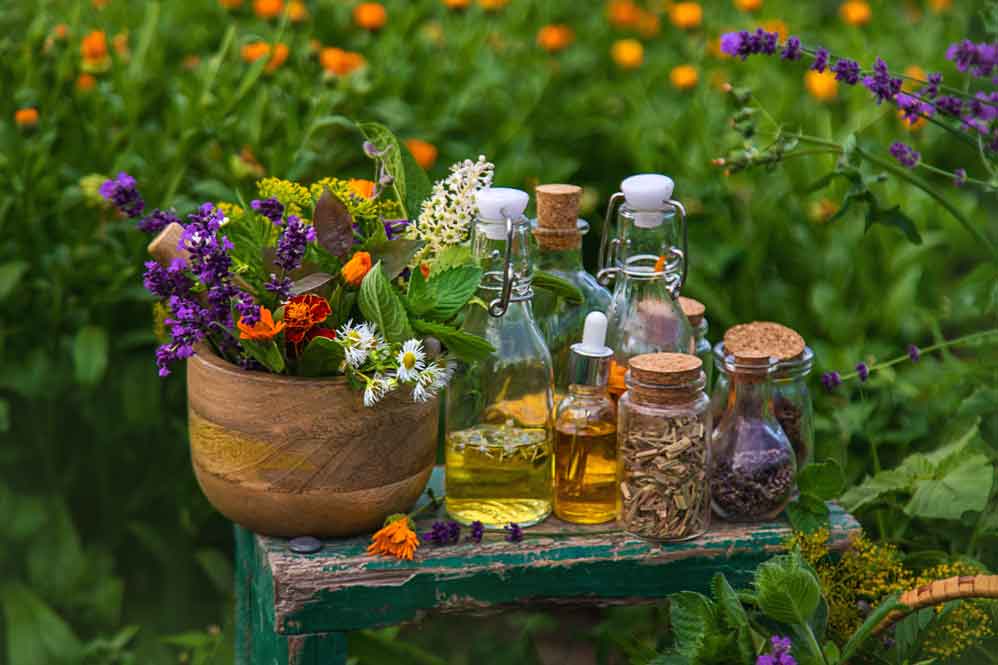
The most common methods used are sowing from seed and vegetative propagation through cuttings. This depends on the species, the time of year in which we begin sowing, and the available space for our agricultural project.
Planting herbs from seeds:
- Annual and biennial species especially benefit greatly from this cultivation technique, as it doesn’t require large investments; only adequate humidity, temperature, and sunlight conditions.
- We’ll use shallow, individual trays with a light, spongy, well-draining substrate. We then place a single seed in each cavity to make transplanting easier later. Once positioned, we cover them with a light, thin layer of substrate or vermiculite.
- Remember that some seeds, such as parsley, grow better if soaked for 12 to 24 hours.
- We lightly spray with water to moisten the substrate, remembering to avoid excess.
- Now we’ll create a microclimate by covering each seedbed with a transparent plastic lid with holes so our seeds receive indirect natural light and balanced humidity. We’ll ventilate them daily. We need to maintain a temperature between 18° and 25° for successful and robust germination.
- Depending on the species we have chosen, the germination time will vary, but the first shoots generally appear between 7 and 30 days.
- We will transplant when 3 or more true leaves appear on each seedling.
- If we want to plant herbs with rapid germination capacity, we should select basil, parsley, cilantro, chives, dill, and fennel.
Planting aromatic plants by cuttings: vegetative reproduction.
This technique involves taking a piece of stem, or cutting, from a mother plant. We do this because some species germinate slowly or may not develop well from their seeds, which can often prove sterile. Cuttings are faster and guarantee identical reproduction to the mother plant.
Examples of this are perennial, woody, or semi-woody aromatic plants:
Rosemary (Rosmarinus officinalis): This is a woody, perennial herb, whose seeds germinate slowly and often have low success rates. Taking cuttings in spring and fall can ensure robust, identical plants.
Thyme (Thymus vulgaris): This species is considered a woody subshrub. It can germinate from seeds, but propagating it from cuttings guarantees more effective results in less time. These cuttings need to root in light substrates with controlled humidity.
Oregano (Origanum vulgare): This semi-woody species can be grown in the ground, but if we grow it from cuttings we will obtain faster rooting and more uniform quality.
Sage (Salvia officinalis): The base of this herb is woody, so the seeds may present unexpected variations. Furthermore, we can be sure that the cuttings will produce more intense aromas and a more robust structure.
Lavender (Lavandula angustifolia): This aromatic plant is a woody shrub. Its seeds germinate slowly, and we are not sure how to achieve optimal results from seedlings. In nurseries, cuttings are usually taken in spring and summer, with good yields.
Mint (Mentha spp.): This is a perennial, rhizomatous species, meaning it reproduces through horizontal underground stems that extend below the ground. From these stems, new shoots and roots with a high regenerative capacity emerge.
In this case, we must maintain control over the mint planting, as it can invade and compete with neighboring crops, especially oregano. We recommend growing it in pots or in designated areas of our gardens, and by cuttings or dividing the roots to obtain identical plants.
Lemon balm (Melissa officinalis): a semi-woody perennial. By propagating this herb with cuttings or dividing its roots, we can accelerate production and preserve its medicinal properties with improved results.
Planting herbs from cuttings: an effective and simple technique.
Let’s study this simple way to plant aromatic plants by cuttings:
- Spring and fall are the best times to implement this method, as the aromatic plants will not be in their active flowering period.
- We cut a healthy stem: we choose one between 8 and 15 cm that we see as young and robust, and we will make the cut just below a node.
- We remove the lower leaves, leaving only two or three pairs at the top of the stem. We can help ourselves by using natural hormones such as willow infusion to promote more vigorous rooting.
- Next, we spread biodegradable paper mulch over the area where we are going to plant the cuttings, making holes to place each one.
- We plant the stem 3 or 4 cm deep in each hole we made before mulching, and remember that the substrate must be moist and light, combining peat and perlite or coconut fiber.
- We should keep our cuttings in partial shade and constant but not excessive humidity, although paper mulch will be a perfect regulator for the correct dose of humidity.
- The roots will begin to develop between 2 and 4 weeks after starting to plant the cuttings, and once this stage is complete, we move on to transplanting them into raised beds, pots, or open ground.
- Let’s summarize the aromatic plants that we can easily reproduce using this cutting method: rosemary, thyme, lavender, sage, oregano, mint.
And below is a link that shows us another way of reproduction by cuttings:
Why combine these techniques to plant aromatic plants with biodegradable mulch?
When transplanting from seedbeds and rooted cuttings into the final soil, biodegradable paper mulch will be our faithful assistant. In addition to controlling humidity during the delicate stages of early planting and thus avoiding water stress, it also protects the root system from sudden temperature changes and winds.
Paper mulch prevents weed invasion and competition, facilitates the rooting process, and with its help we can achieve safe and optimal yields for all our crops: small, medium, and large.
Use Novamulch biodegradable paper mulch to plant herbs. Buy it here!
-
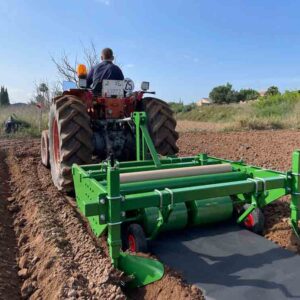 Novamulch agricultural mulching machine
Novamulch agricultural mulching machine -
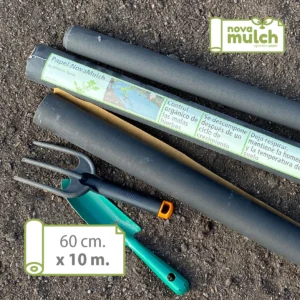 Novamulch paper 60 cm. x 10m.14,85 € IVA incluido
Novamulch paper 60 cm. x 10m.14,85 € IVA incluido -
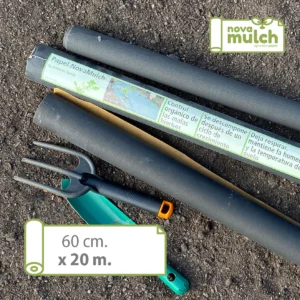 Novamulch paper 60 cm. x 20 m.21,89 € IVA incluido
Novamulch paper 60 cm. x 20 m.21,89 € IVA incluido -
 Novamulch paper 120 cm. x 20 m.41,63 € IVA incluido
Novamulch paper 120 cm. x 20 m.41,63 € IVA incluido -
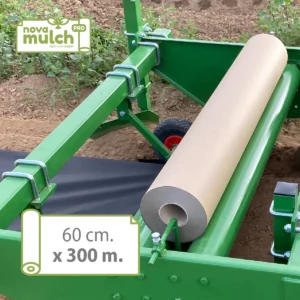 Novamulch Professional Paper 60 cm. x 300 m.47,10 € IVA incluido
Novamulch Professional Paper 60 cm. x 300 m.47,10 € IVA incluido -
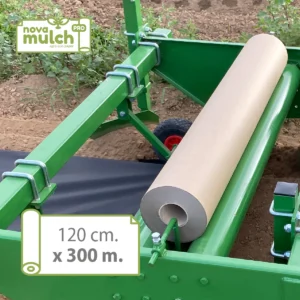 Novamulch Professional Paper 120 cm. x 300 m.94,21 € IVA incluido
Novamulch Professional Paper 120 cm. x 300 m.94,21 € IVA incluido -
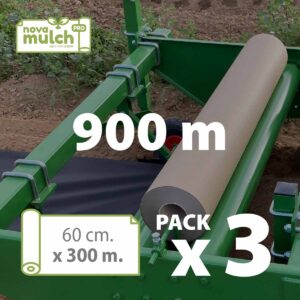 PACK of 3 rolls of Novamulch Professional paper 60 cm. x 300 m. (900 m)141,30 € IVA incluido
PACK of 3 rolls of Novamulch Professional paper 60 cm. x 300 m. (900 m)141,30 € IVA incluido -
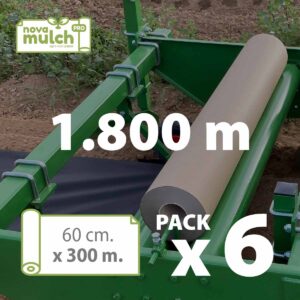 PACK of 6 rolls of Novamulch Professional paper 60 cm. x 300 m. (1.800 m)282,22 € IVA incluido
PACK of 6 rolls of Novamulch Professional paper 60 cm. x 300 m. (1.800 m)282,22 € IVA incluido -
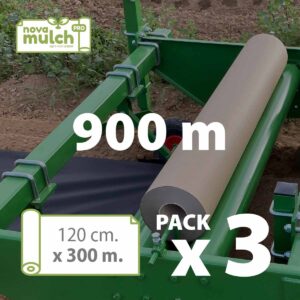 PACK of 3 rolls of Novamulch Professional paper 120 cm. x 300 m. (900 m)282,22 € IVA incluido
PACK of 3 rolls of Novamulch Professional paper 120 cm. x 300 m. (900 m)282,22 € IVA incluido -
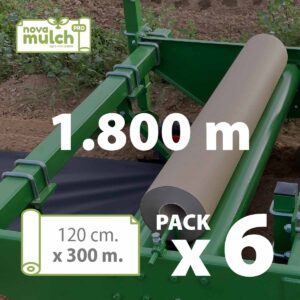 PACK of 6 rolls of Novamulch Professional paper 120 cm. x 300 m. (1.800 m)565,28 € IVA incluido
PACK of 6 rolls of Novamulch Professional paper 120 cm. x 300 m. (1.800 m)565,28 € IVA incluido
Comparative study of resistant aromatics.
Let’s examine the range of some aromatic species to take into account when choosing according to our environment and climate:
Rosemary: temperature range (5° to 35°)/ cold tolerance (high to -5°C)/ water requirement (low)/ suitable soil type (poor, well-drained).
Thyme: temperature range (4° to 32°)/ cold tolerance (high to -7°C)/ water requirement (very low)/ suitable soil type (stony, dry).
Oregano: temperature range (8° to 30°)/ cold tolerance (medium to -4°C)/ water requirement (low)/ suitable soil type (light, calcareous).
Salvia: temperature range (7° to 30°)/ cold tolerance (medium to -3°C)/ water requirement (low)/ suitable soil type (loose, dry).
Lavender: temperature range (5° to 35°)/ cold tolerance (high to -10°C)/ water requirement (very low)/ suitable soil type (sandy, alkaline).
Fennel: temperature range (10° to 30°)/ cold tolerance (average to -2°C)/ water requirement (moderate)/ suitable soil type (loamy, deep).
Transplanting and acclimatizing aromatic plants to their final soil.
Planting herbs is a very rewarding and profitable project, and it provides us with a unique learning experience about the potential of certain seeds and the magic of propagating from cuttings. Now, we have reached a crucial stage, as it will determine the future success of our aromatic agricultural roadmap.
Transplanting into the final soil, whether in pots, raised beds, or open ground, determines the quality of development of our rooted plants and cuttings, as well as their ability to adapt to the environment and achieve robust results with exquisite, long-lasting aromas that can be used throughout their useful life.
Let’s then study the times to do the transplant and the methods to do it properly:
Each transplant will be done when the seedling has 3 or 4 true leaves in the case of seedbeds, and when we observe that each cutting has developed a well-formed and robust root system.
For most species, spring and autumn are the most favorable seasons, as the plant that has been gradually exposed to the elements will be hardened and secure enough to successfully continue its growth process.
Choosing the right area is essential and must meet the specific requirements of each species:
- Mediterranean aromatic plants such as rosemary, lavender and thyme need direct sunlight.
- Tender herbs such as basil and mint thrive in partial shade and more moisture.
- In pots, the soil should be loose and rich in compost or organic matter, with good aeration capacity and previously free of weeds or remains of previous crops or hard objects such as stones, dry and compacted soil, pieces of bricks and plastic waste.
- We will make a hole with a depth that is twice the size of the root block, we will extract each plant very carefully so as not to break them, and we will place them in the holes.
- We cover it with the soil we have prepared, compacting the plant gently to secure it and give it solidity, and we water it generously without flooding it.
Now we begin the acclimatization stage.
We may occasionally notice that the true leaves turn yellow, or that plant growth slows for several days. This is normal as they are adapting to a new habitat.
How do we help our plants adapt more fluidly?
- We will take measures such as watering periodically during the first few weeks if we notice that the soil is absorbing moisture more quickly.
- We will build tunnels over areas exposed to strong winds or intense sunlight.
- We will always monitor the evolution and adaptation to the new habitat to take appropriate measures; that is, we will allow this process to be as natural and spontaneous as possible. Let us remember that nature communicates and integrates according to its parameters.
- Let’s take pH measurements to make sure the soil is holding its balanced nutrients, and then we’ll determine if we should add more.
- When flowering time arrives, we remove the first ones to allow our plants to focus their vital energy on rooting.
- When we use biodegradable paper mulch at this delicate stage, we allow the plants to achieve better rooting in the final soil, and the latter will be much more stable against sudden changes in temperature or unexpected strong winds.
- On the other hand, paper mulch reduces water evaporation and, as a physical barrier, inhibits the growth and proliferation of fungi and weeds.
Harvest times for aromatic plants according to their species and intended use.
Another essential step we’ll take into account when planting aromatic plants is to consider harvesting and collecting, as this crucial step will help us achieve the uses we’ve planned for them from the start of our roadmap.
Planting herbs is a beautiful and rewarding endeavor when we visualize the desired end use, whether for making infusions, essential oils, dehydrated, or fresh to season food and beverages. The timing of the harvest depends on this. This means that, as these species undergo their own development and maturity processes, they will not be harvested at the same time.
Let’s analyze the first part of the harvest times for aromatic herbs:
Purpose of the cut: culinary and medicinal uses.
Best time of day to harvest: early in the morning, after the dew has evaporated and before intense heat sets in.
During these hours, their essential oils are most intensely concentrated, just before the flowering stage.
Cutting purpose: essential oils, therapeutic oils, homemade oils, medicinal infusions, and cosmetic products.
The best time of day to harvest: generally between 9:00 and 11:00 am. During this time, the dew has evaporated, the leaves remain fresh but dry, and the plants are in their balanced metabolic phase, allowing their structure and properties to be preserved at their best.
Furthermore, the temperature between these hours is relatively low, which prevents heat-sensitive volatile compounds from evaporating.
If we cut this time, we will achieve the maximum concentration of our essential oils when preparing them, especially with aromatics such as lavender, thyme, oregano, and rosemary.
Purpose of the cut: tea and infusions.
The right time of day to harvest: just before or just as the flowering stage begins, outside of the intense heat so that our herbs don’t dehydrate. Don’t harvest on rainy or humid days, as drying will be very slow and the plants can quickly develop fungus.
Purpose of the cut: distillation or extraction of essential oils from lavender, mint, rosemary, lemon balm, and sage.
Best time of day to harvest: at the beginning or full bloom phase, on sunny, windless mornings, just as the flowers begin to open, their aroma will be most intense and concentrated.
Harvest calendar for aromatic herbs by species and use.
Let’s save this information so we can use it as a guide. It will be very useful.
Rosemary:
Culinary Use/Young Leaves: year-round.
Dried/Infusions: spring and fall.
Essential Oils/Preparations: spring and fall for woody branches.
Thyme:
Culinary Use/Young Leaves: Spring and Summer.
Dried/Infusions: Late Spring.
Essential Oils/Preparations: Late Spring.
Oregano:
Culinary Use/Young Leaves: Summer.
Dried/Infusions: Full bloom (summer).
Essential Oils/Preparations: Full bloom.
Basil:
Culinary Use/Young Leaves: Spring and Summer.
Drying/Infusions: Before flowering (summer).
Essential Oils/Preparations: Before flowering.
Parsley:
Culinary Use/Young Leaves: year-round.
Drying/Infusions: before flowering (spring/fall).
Essential Oils/Preparations: not applicable.
Lavender:
Culinary Use/Young Leaves: Not recommended.
Drying/Infusions: Full bloom (summer).
Essential Oils/Preparations: 50 to 60% of open flowers (summer).
Sage:
Culinary Use/Young Leaves: Spring.
Drying/Infusions: Early flowering (spring).
Essential Oils/Preparations: Early flowering.
Mint:
Culinary Use/Young Leaves: Spring and Summer.
Drying/Infusions: Before flowering (summer).
Essential Oils/Preparations: Before flowering.
Chamomile:
Culinary Use/Young Leaves: not applicable.
Drying/Infusions: full bloom (spring).
Essential Oils/Preparations: full bloom.
Lemon Balm:
Culinary Use/Young Leaves: Spring and Summer.
Dried/Infusions: Early flowering (spring).
Essential Oils/Preparations: Early flowering.
Spearmint:
Culinary Use/Young Leaves: Spring and Summer.
Drying/Infusions: Before flowering (summer).
Essential Oils/Preparations: Before flowering.
Fennel:
Culinary Use/Young Leaves: Spring and Summer.
Drying/Infusions: Before flowering (summer).
Essential Oils/Preparations: Full bloom.
Lemon Balm:
Culinary Use/Young Leaves: Spring and Fall.
Drying/Infusions: Flowering (Summer).
Essential Oils/Preparations: Early Flowering.
Dill:
Culinary Use/Young Leaves: Spring.
Drying/Infusions: Full bloom (spring).
Essential Oils/Preparations: Full bloom.
Chives:
Culinary Use/Young Leaves: Spring and Summer.
Drying/Infusions: Before flowering (spring).
Essential Oils/Preparations: Not applicable.
How to store aromatic herbs fresh.
Once our herbs are harvested, we move on to the next step: storing them for the various uses we intend to put them to. Traditionally, we keep them refrigerated so they don’t lose the intensity of their original aroma if we plan to consume them soon.
For these cases, the most recommended herbs that we can keep for several days are basil, parsley, cilantro, chives, dill, mint, and lemon balm. On the other hand, woody herbs like rosemary, lavender, sage, and thyme should preferably be preserved dried or in oils.
Let’s look at some ways we can keep our herbs fresh, and how many days we can keep them healthy:
In containers with water.
Approximate shelf life: 5 to 7 days.
Basil, cilantro, parsley, and mint: Cut the stems to 3 to 5 cm long. Remove the lower leaves so they don’t come into contact with the liquid. Place the stems in clean containers filled with clear water. Cover the leaves with a clear plastic bag with several small holes. This allows you to observe the freshness of the leaves and allows them to breathe. Don’t forget to change the liquid daily to prevent mold or mildew growth. Store the containers in the refrigerator or in cool, shaded areas.
In the refrigerator.
Approximate shelf life: 4 to 10 days depending on the species.
Chives, dill, lemon balm, and lemon balm: separate the leaves and wash them thoroughly with water and a few drops of vinegar. Then, dry them gently with absorbent paper or a very clean, dry cloth. Wrap them in a slightly damp absorbent paper and store them in a zip-lock bag, squeezing out the air. You can also store them in a container with a tight-fitting lid. It’s recommended to label the bag or container with the species you’re storing and the harvest date.
Here’s a video showing how to preserve the freshness of our herbs without washing them before storing them in the refrigerator:
Recommendations:
Harvest early in the morning, when essential oils are most concentrated and the leaves are freshest. When washing, do so carefully and quickly so they retain their natural protective layer.
It is not very beneficial to store them near fruits such as apples or bananas, as the latter release ethylene, which wilts the leaves of the aromatic plants.
How to properly dry aromatic plants.
This method is highly valued and frequently used, as it also allows us to preserve the aroma and medicinal properties of these spices for longer, without the need for refrigeration. Drying extends shelf life after harvest by approximately several months to a year, preserving essential oils and the intensity of the aromas.
It also prevents the growth of mold, mildew, or leaf spots, and allows us to store our herbs in clean, airtight jars and bags for a long time.
The most suitable aromatic spices for drying are: Rosemary, Oregano, Lavender, Thyme, Sage, Mint, Spearmint, Lemon Balm, Coriander (leaves and seeds), Parsley, Dill and Chamomile flowers.
We present different types of drying here and will show an excellent video as part of the guide:
Air drying:
- Suitable for: rosemary, thyme, lavender, oregano, sage, mint.
- We cut the stems early in the morning once the dew has evaporated from the leaves. We form small clumps of branches and tie them with natural thread. We hang them upside down in ventilated, dry, and shaded spaces. We should avoid direct sunlight as this will cause their essential oils to evaporate.
- Let the bundles dry for 7 to 15 days, always observing the humidity level of the drying space.
Drying on mesh or trays.
- Suitable for: parsley, coriander, chamomile, loose flowers, delicate herbs.
- We need a rack or tray large enough to accommodate the leaves and flowers without overlapping them. It’s important to ensure good air circulation from the start. We’ll also place it in a shaded, dry space.
- Approximately every two days we will remove the leaves and flowers to check aeration and drying progress.
Quick method: Oven drying.
- We will only do this type of drying if we find ourselves in a situation where we need to do it immediately or we don’t have the appropriate space to do it.
- Place the leaves and flowers on a baking sheet, without overlapping them. Preheat the oven to 40°C to 50°C maximum. Ajar the oven door so the moisture can evaporate more quickly, and wait 1 to 2 hours, constantly checking for dryness.
We show this excellent information:
We must verify that our drying has been successful: The leaves and flowers should crumble immediately to the touch and not bend. They should retain their original color as much as possible (green, purple, silver). We will perceive an intense and clean aroma when we unwrap them.
Storage recommendations:
We’ll have glass containers with airtight lids, very clean and dry, or kraft paper bags, from which we’ll remove the air to compact them and preserve their drying.
We place them inside the containers, close them tightly, and place them in a cool, dry, and shaded space.
Each container must be labeled with the harvest date and the name of each aromatic spice. We should not crush the spices before packaging to maintain the aroma for as long as possible.
How to use aromatic plants to prepare essential oils.
Planting aromatic plants to produce essential oils is a highly effective and valued ancient tradition. Since ancient times, essential oils extracted from aromatic plants have been used in natural therapies, cosmetic preparations, and flavorings.
What is an essential oil?
They are highly concentrated extracts obtained from the entire structure of plants, and contain volatile compounds that produce the aromas specific to each species and their medicinal properties (linalool, cineole, eugenol).
These essential oils are widely used in aromatherapy, natural cosmetics, traditional medicine, and organic farming as repellents or fungicides for major crops.
The following herbs are particularly suitable for this:
Lavender (soothing, antiseptic), Rosemary (stimulating, antifungal), Thyme (antibacterial, expectorant), Oregano (antimicrobial, powerful antifungal), Sage (regulating, healing),
Mint (refreshing, analgesic), Lemon Balm (relaxing, digestive), and Basil (anti-inflammatory, repellent).
We use biodegradable paper mulch in these crops because, in addition to protecting the root system, which is an essential ingredient in the preparations of these oils, it helps inhibit the emergence and proliferation of weeds and maintains the necessary humidity level for healthy plant development. Above all, it is important to use this material to obtain cleaner, healthier leaves with a higher concentration of essential oils and aromas.
What is maceration?
- This is a very common method for preparing these oils. It consists of gradually extracting the active compounds, aroma, and medicinal properties of the aromatic spices, and we do this in a base liquid for a specific period of time. These liquids are generally common vegetable oils such as extra virgin olive oil, sweet almond oil, jojoba oil, and cold-pressed sunflower oil, which will assimilate soluble compounds such as flavonoids, tannins, and active ingredients, without the need to subject them to direct heat. This way, we can preserve their medicinal and cosmetic properties.
- To make a maceration, we first need fresh or dried aromatic plants, the vegetable oil we have chosen, sterilized dark glass jars with airtight lids, cloth or gauze filters, labels to identify each preparation, and a space to store them for approximately 2 to 6 weeks.
Steps to macerate aromatic spices:
- We fill each jar with the leaves, flowers, and stems of the plant. We completely cover the jar with the chosen oil. We seal it tightly and let it sit for 2 to 6 weeks in a warm, dark place. We shake gently every 2 days. After this time, we filter the mixture and store it in another dark glass jar, labeling it with the plant information, the maceration date, and the filtration date.
- This method is very suitable for making massages, herbal preparations and cosmetics.
Pests and diseases common to aromatic plants.
When we design our roadmap for planting aromatic plants, we know in advance that their essential oils and intense aromas serve as fungicides and repellents against invading agents in our main crops. However, they are not exempt, especially when the growing areas are humid, or located in prolonged shade, or suffer from water stress due to a lack of nutrients. Let’s study:
Common pests in aromatic plants.
Aphids (Aphididae):
Aromatic plants prone to this pest: basil, mint, parsley, cilantro, chives.
Symptoms: curled leaves, sticky honeydew, ants on stems and leaves.
Ecological solution: potassium soap, garlic infusion, or introducing ladybugs.
Whitefly (Bemisia tabaci):
Aromatic plants prone to this pest: basil, sage, lemon balm.
Symptoms: Yellowing leaves, presence of small white flying insects.
Ecological solution: yellow chromatic traps, neem, or potassium soap.
Red spider mite (Tetranychus urticae):
Aromatic plants prone to this pest: thyme, oregano, mint, lavender.
Symptoms: Yellow spots on leaves, fine cobwebs, dehydration.
Ecological solution: Increase humidity, spray with water and horsetail.
Thrips (Thrips spp.):
Aromatic plants prone to this pest: chives, mint, basil.
Symptoms: silver spots on leaves, deformities.
Eco-friendly solution: chamomile tea, blue traps, neem extract.
Slugs and snails:
Aromatic plants prone to this pest: basil, mint, parsley.
Symptoms: Irregular holes, slime trails.
Ecological solution: beer traps, ash, physical barriers, biodegradable paper mulch that adequately controls moisture.
Common diseases in aromatic plants.
Powdery Mildew (White Powder):
Aromatic plants prone to this pest: sage, thyme, mint, basil.
Symptoms: White powder on leaves, deformities.
Prevention: Good ventilation, avoid overhead irrigation.
Treatment: Baking soda with water, diluted milk, powdered sulfur (organic).
Botrytis (gray mold):
Aromatic plants prone to this pest: lavender, rosemary, basil.
Symptoms: Brown spots and gray mold on leaves and stems.
Causes: Excess moisture or plants too close together.
Solution: Preventative pruning, improved ventilation, horsetail infusion.
Fusarium:
Aromatic plants prone to this pest: oregano, mint, dill.
Symptoms: Wilting, yellowing, root necrosis.
Prevention: Crop rotation, well-drained soil.
Treatment: Difficult to eradicate. Remove affected plants, remove contaminated root or stem debris, re-mix the substrate, and use clean tools.
How to prevent pests and diseases in aromatic crops?
Yes. We can avoid these problems by taking precautions before planting herbs in any chosen environment. Here are some easy-to-implement preventative measures:
- Make sure you have purchased healthy seeds and selected robust, healthy stems from the mother plants.
- Space each plant at the recommended distance to ensure adequate ventilation, and establish partnerships between them to create a natural, strengthened habitat that prevents the invasion of these harmful agents. We can intercrop rue, lavender, and rosemary with our main crops.
- Spread biodegradable paper mulch and place each plant in pre-drilled holes in the material to control humidity, inhibit the growth and proliferation of fungi in the soil, and prevent direct contact of the leaves with the soil.
- Avoid the use or excess of nitrogen fertilizers, as their components soften and weaken plant tissues and make them prone to unwanted invasions.
Final thoughts.
When we create this enriching and stimulating agricultural roadmap—planting herbs—and design a manageable and productive environment, whether in home, community, or large-scale gardens, in pots, raised beds, or open fields, we experience a very special connection with the earth and its spaces—our spaces.
We unwittingly expand our capacity for learning and adaptation to understand the life processes of these plants with their intense and healing aromas, which in turn provide us with so many benefits in cooking, medicine, a whole range of therapies, cosmetics, and simply in scenting the spaces we inhabit every day.
By planting herbs, we are part of a regenerative culture that respects and benefits ecosystems and biodiversity. By using biodegradable paper mulch, we produce optimal quality in this and all our crops, while also providing profitability by reducing costs and unforeseen investments.
At the same time, we become seekers of ancestral medicinal and natural knowledge, while also making use of this wonderful ecological technology: biodegradable paper mulch.
Let’s continue sowing a sustainable future, let’s get to work and much success!

